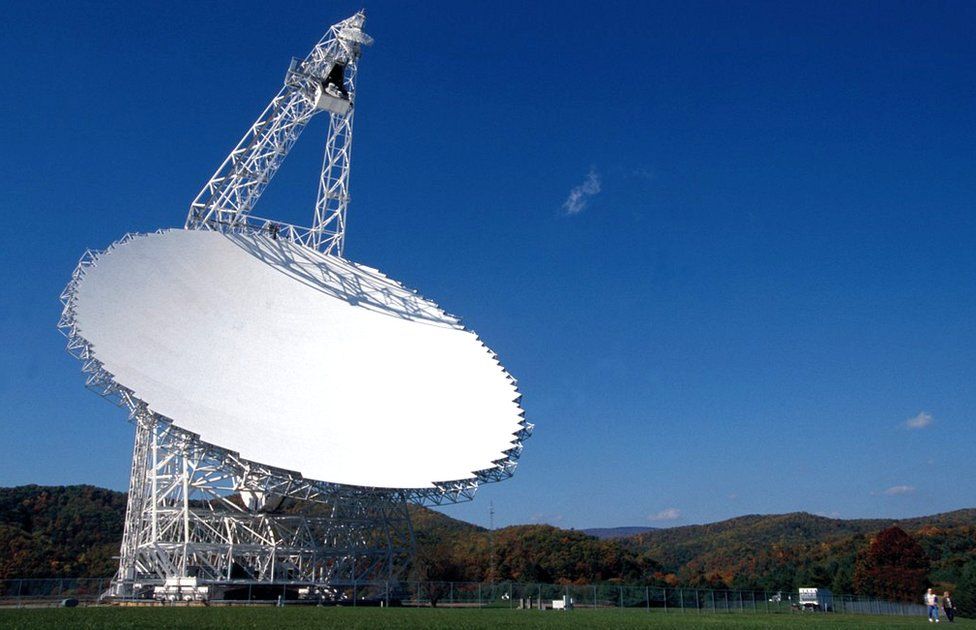Dish to listen for ET around strange star
- Published

A $100m initiative to listen for signals from alien life is targeting a star with an unusual dimming pattern.
The Breakthrough Listen project, backed by Prof Stephen Hawking, will train a US radio telescope on a target called Tabby's Star.
Tabby's Star has been a subject of attention and controversy over its irregular dimming pattern.
Some scientists have been puzzled by large dips in the star's brightness.
One of the most favoured explanations for this behaviour is that a swarm of comet fragments is periodically blocking light from the star, which also known by its official designation - KIC 8462852.
One very remote and speculative idea - yet one that has attracted much attention in the media - is that the pattern is caused by some kind of artificial structure, or a collection of structures, around the star.
The co-director of the Breakthrough Listen programme, Dr Andrew Siemion, said he was sceptical of explanations that involved intelligent life.
He added: "The Breakthrough Listen programme has the most powerful SETI equipment on the planet, and access to the largest telescopes on the planet.
"We can look at it with greater sensitivity and for a wider range of signal types than any other experiment in the world."
The team plans to use the 100m Green Bank Telescope in West Virginia, US, to observe the star, which is named after the leader of the team that discovered it - Tabetha Boyajian, assistant professor at Louisiana State University.
Previous searches, using the Hubble Space Telescope and the Keck Observatory, have failed to find any unusual signals around the star.
But Dr Siemion explained: "The Green Bank Telescope is the largest fully steerable radio telescope on the planet, and it's the largest, most sensitive telescope that's capable of looking at Tabby's star given its position in the sky."
The unusual behaviour around Tabby's star was first reported in September 2015 by Dr Boyajian, who was then a postdoctoral student at Yale University. The findings were published in the Monthly Notices of the Royal Astronomical Society.
The team was actually looking for evidence of planets orbiting stars other than our own.
While most such dimming by transiting planets is brief, regular and blocks just 1 or 2% of the light of the star, Tabby's star dims for days at a time, by as much as 22%, and at irregular intervals.
Speculation that the phenomenon could be caused by a "megastructure" built by an intelligent civilisation, has been dismissed by most scientists. But it has propelled the stellar object to prominence in the popular media.
"I don't think it's very likely - a one in a billion chance or something like that - but nevertheless, we're going to check it out," said Dan Werthimer, chief scientist at Berkeley SETI, based at the University of California, Berkeley.
Yet Tabby's Star remains a fascinating conundrum for astronomers. Some observations show that the dips in brightness are more irregular than a comet swarm would produce. And another study suggested that it had been dimming at a steady rate for the past century.
The Breakthrough Listen initiative was launched in 2015 at an event in London. It is largely funded by Russian entrepreneur Yuri Milner - who also supports the Breakthrough Prizes for science and maths.